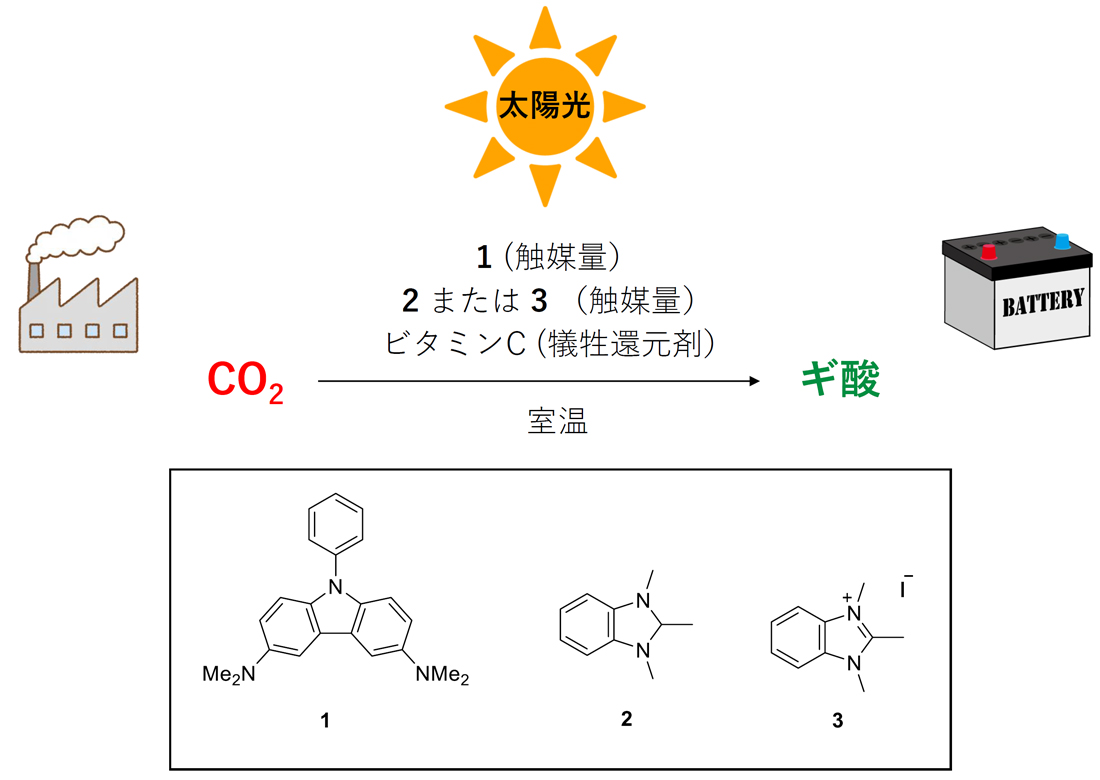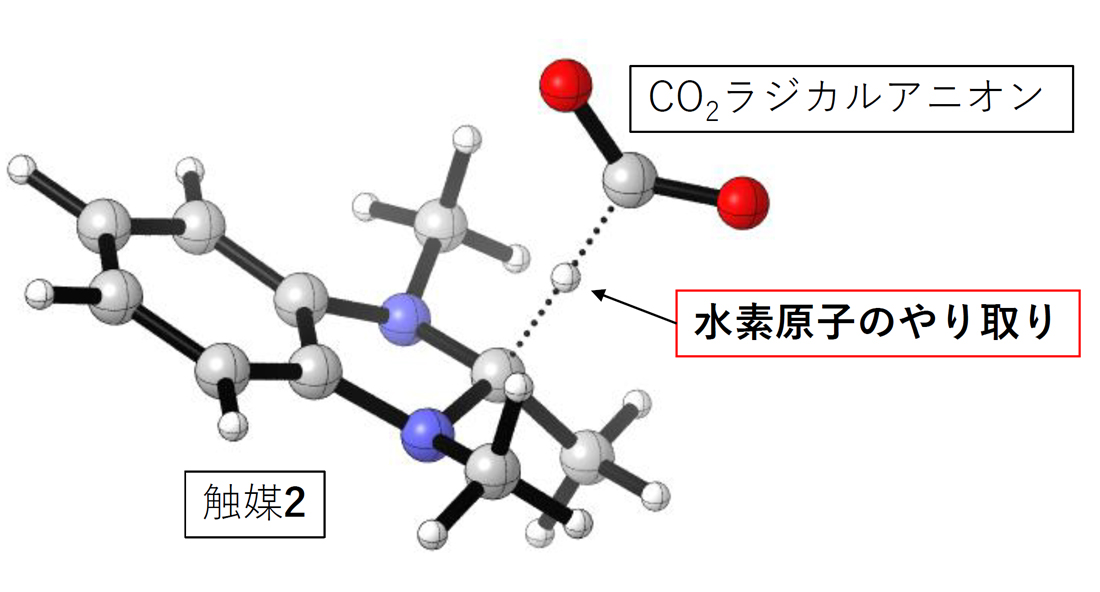研究内容
- Hayashi
- 研究简介
- 不对称催化反应
- 环境友好型氧化反应
- N体系配体-金属配合物催化反应

Artificial Photosynthesis without Transition Metal
Development of Artificial Photosynthesis without using Transition Metals
In natural photosynthesis, solar energy is used to synthesize oxygen and glucose from water and carbon dioxide. Thanks to photosynthesis, animals including humans are able to respire and move by obtaining nutrients.
Artificial photosynthesis, which mimics natural photosynthesis, is a technology that uses light energy to artificially produce hydrogen and oxygen from water, or convert carbon dioxide into methane. With the depletion of fossil fuels becoming a pressing issue, artificial photosynthesis is an essential technology for achieving a sustainable society.
Artificial photosynthesis has been extensively studied, and there are many reported examples. However, in previous examples, transition metal elements have almost always been included in catalyst molecules used in the reaction process of artificial photosynthesis. This is because transition metal elements are good at catalyzing the oxidation and reduction steps involved in artificial photosynthesis reactions. However, transition metal elements are often rare and subject to country risks, posing challenges from the perspective of sustainability.
In recent years, our laboratory has developed one approach of artificial photosynthesis that does not use any transition metal elements, by assigning the roles that transition metals typically play to non-transition metal molecules. We continue to aim for the development of new reaction systems that challenge the inherent properties of elements and rely on precise design of organic molecule structures to achieve highly challenging reactions, testing the pride of being organic chemists.
非遷移金属触媒による光化学的二酸化炭素固定化反応


